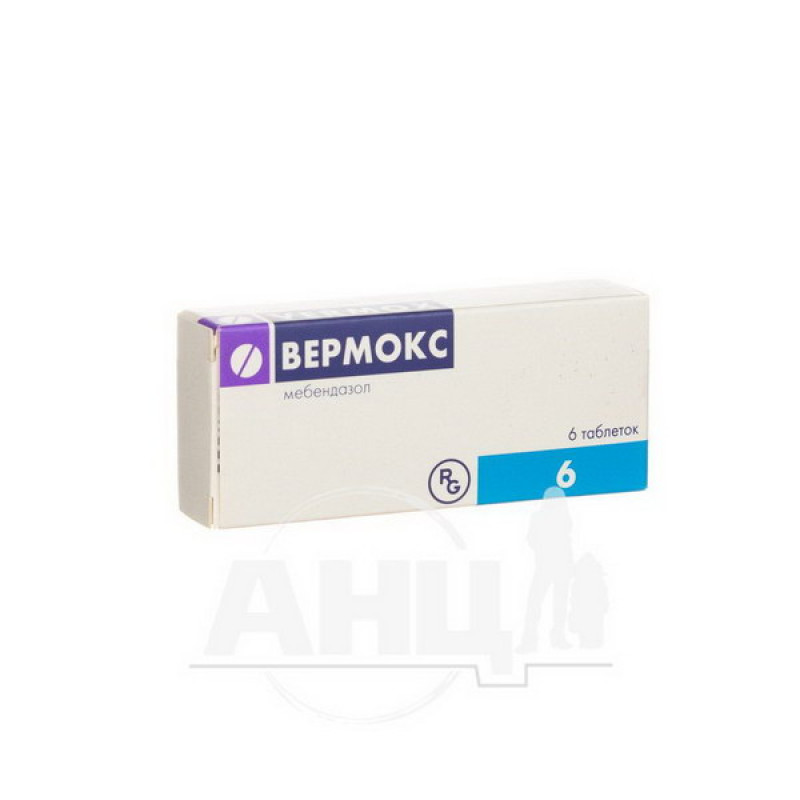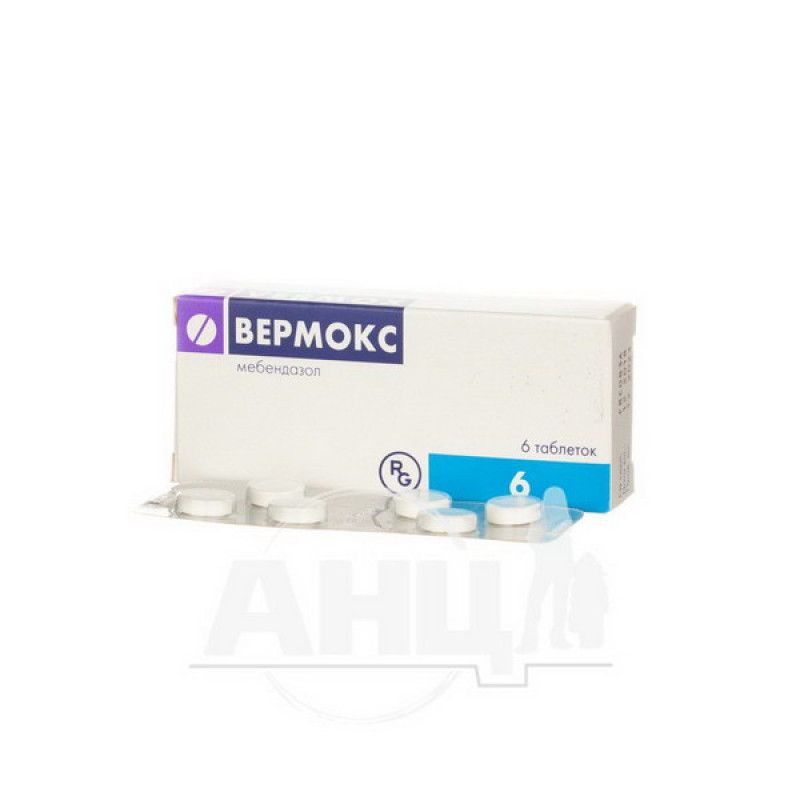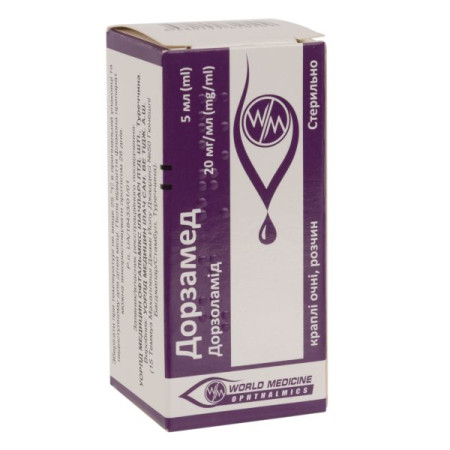Vermox tablets 100 mg No. 6

Pharmacological properties
Pharmacodynamics. Mebendazole is a broad-spectrum anthelmintic. It is active against Enterobius vermicularis, Ascaris lumbricioides, Trichuris trichiura, Ancylostoma duodenale, Necator americanus, Strongyloides stercoralis, Taenia spp. or mixed infestations.
The drug causes degeneration of the helminth's cytoplasmic microtubules, thereby preventing glucose utilization, reducing energy metabolism, and causing the death of the parasite.
Pharmacokinetics. After oral administration, mebendazole is absorbed in a small amount in the gastrointestinal tract. A small part of it, entering the blood, is 90% bound to blood plasma proteins and metabolized in the liver.
Indication
Enterobiasis, ascariasis, trichocephalosis, hookworm infection (ankylostomiasis, necatoriasis), strongyloidiasis, teniasis, mixed helminthiasis.
Application
For enterobiasis, adults and children over 2 years of age, regardless of body weight and age, are prescribed 1 tablet (100 mg) of Vermox once. Due to frequent recurrences of infection, it is recommended to repeat the treatment after 2 and 4 weeks.
For ascariasis, trichocephalosis, hookworm infection, or mixed helminthiasis, adults and children over 2 years of age, regardless of body weight and age, are prescribed 1 tablet (100 mg) 2 times a day (1 tablet in the morning and 1 tablet in the evening) for 3 consecutive days.
For taeniasis and strongyloidiasis, adults - 2 tablets in the morning and evening (400 mg/day) for 3 consecutive days; children over 2 years old - 1 tablet in the morning and evening (200 mg/day) for 3 consecutive days.
During treatment with Vermox, no special diet or laxatives are required. The tablets can be chewed or swallowed whole. For younger children, the tablet can be crushed before use.
Contraindication
Hypersensitivity (allergy) to any of the components of the drug, pregnancy and breastfeeding.
Side effects
The list of these adverse reactions is classified by frequency of occurrence: very common (≥1/10), common (≥1/100 - 1/10), uncommon (≥1/1000 - 1/100), rare (≥1/10,000 - 1/1000), very rare (1/10,000), unknown (cannot be determined from the available information).
Blood and lymphatic system disorders: very rarely - neutropenia.
Immune system disorders: very rarely - hypersensitivity reactions, including anaphylactic and anaphylactoid reactions.
From the side of the central nervous system: very rarely - convulsions, dizziness.
Gastrointestinal tract: often - pain in the lower abdomen; sometimes - abdominal discomfort, diarrhea (with a high degree of infection), flatulence.
Skin and subcutaneous tissue disorders: sometimes - rash; very rarely - toxic epidermal necrolysis, Stevens-Johnson syndrome, rash, angioedema, urticaria, alopecia, itching.
Adverse reactions that have been noted with prolonged use of the drug in doses significantly exceeding those recommended:
Liver and biliary tract disorders: very rarely - liver dysfunction, hepatitis;
From the kidneys and urinary tract: unknown - glomerulonephritis.
Special instructions
Each tablet contains 110 mg of lactose monohydrate, therefore patients with rare hereditary forms of galactose intolerance, lactase deficiency or glucose-galactose malabsorption syndrome should not use the drug.
Studies have suggested a possible association between the use of mebendazole and metronidazole and the occurrence of Stevens-Johnson syndrome/toxic epidermal necrolysis. Concomitant use of mebendazole and metronidazole should be avoided.
Use during pregnancy and breastfeeding. Since Vermox is contraindicated during pregnancy, pregnant women or those suspected of being pregnant should not use the drug.
It is not known whether mebendazole passes into breast milk, so breastfeeding is not recommended while using the drug.
Children. Used to treat children aged 2 years and over. Due to insufficient experience with the use of the drug in children under 2 years of age, as well as the fact that there have been isolated reports of seizures during the use of the drug in children of this age group, Vermox should be prescribed only if the existing helminthic invasion seriously affects their nutritional status and physical development.
Ability to influence the reaction rate when driving vehicles or working with other mechanisms. Mebendazole does not affect the ability to drive vehicles and perform work associated with a high risk of injury, but, given the possibility of developing undesirable side reactions from the nervous system, special caution should be exercised.
Interactions
When administered simultaneously, cimetidine blocks the metabolism of mebendazole in the liver, with a subsequent increase in the concentration of the latter in the blood plasma, especially with prolonged treatment. In such cases, measurement of concentrations is recommended to ensure the necessary doses of both drugs.
The simultaneous use of mebendazole and metronidazole should be avoided (see Precautions).
Overdose
In case of accidental overdose, spastic pain in the lower abdomen, nausea, vomiting, and diarrhea may occur.
Treatment: There is no specific antidote. In the first hour after overdose, it is necessary to wash the stomach and take activated charcoal.
Storage conditions
At a temperature not exceeding 30 °C.
There are no reviews for this product.
There are no reviews for this product, be the first to leave your review.
No questions about this product, be the first and ask your question.








